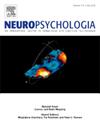Radiomics neurobiomarkers for distinguishing mathematical-related areas in children with elevated ADHD symptoms
IF 2
3区 心理学
Q3 BEHAVIORAL SCIENCES
引用次数: 0
Abstract
Children with ADHD symptoms are at higher risk of experiencing mathematical difficulties. Individuals with ADHD often exhibit lower mathematical accuracy and rely on more basic strategies, even without comorbid learning disorders. In this study, we aim to identify whether this higher risk is associated with general (e.g. executive function) or specific (e.g. calculation) mathematical abilities by analyzing brain areas in structural imaging with radiomics. We used a public brain imaging dataset of mathematical development in children to define two subgroups: one with ADHD symptoms and a control group, matched for age mean and variance. Then, we explore the differences in brain regions related to mathematical performance between these groups using radiomics features in structural imaging. Our results confirm a lower mathematical performance in the group with ADHD symptoms in the behavioral analysis. Structurally, we found differences between the groups in key brain regions associated with attention and memory, including the inferior and middle frontal cortex bilaterally, the right posterior cingulate cortex, and the left hippocampus. Features related to shape demonstrated the highest predictive power. We hypothesize that children with ADHD symptoms might have difficulties with 'number attention' and propose future studies in this area.
放射组学神经生物标志物用于区分ADHD症状升高儿童的数学相关区域
有多动症症状的儿童在数学上遇到困难的风险更高。患有多动症的人往往表现出较低的数学准确性,并且依赖于更基本的策略,即使没有共病的学习障碍。在这项研究中,我们的目标是通过放射组学分析结构成像中的大脑区域,确定这种较高的风险是否与一般(如执行功能)或特定(如计算)数学能力有关。我们使用儿童数学发展的公共脑成像数据集来定义两个亚组:一个有ADHD症状的亚组和一个对照组,年龄均值和方差相匹配。然后,我们利用结构成像中的放射组学特征来探索这些组之间与数学表现相关的大脑区域的差异。在行为分析中,我们的结果证实了ADHD症状组的数学表现较低。在结构上,我们发现两组大脑中与注意力和记忆相关的关键区域存在差异,包括双侧的下额叶皮层和中额叶皮层、右侧的后扣带皮层和左侧的海马体。与形状相关的特征显示出最高的预测能力。我们假设有ADHD症状的儿童可能在“数字注意”方面有困难,并提出在这一领域的未来研究。
本文章由计算机程序翻译,如有差异,请以英文原文为准。
求助全文
约1分钟内获得全文
求助全文
来源期刊

Neuropsychologia
医学-行为科学
CiteScore
5.10
自引率
3.80%
发文量
228
审稿时长
4 months
期刊介绍:
Neuropsychologia is an international interdisciplinary journal devoted to experimental and theoretical contributions that advance understanding of human cognition and behavior from a neuroscience perspective. The journal will consider for publication studies that link brain function with cognitive processes, including attention and awareness, action and motor control, executive functions and cognitive control, memory, language, and emotion and social cognition.
 求助内容:
求助内容: 应助结果提醒方式:
应助结果提醒方式:


